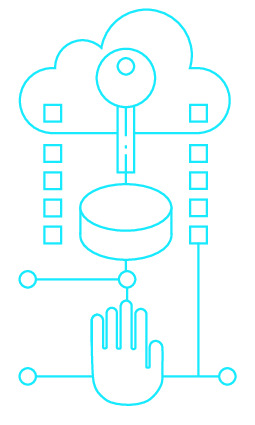|
|
|
| Module code: PIM-WI76 |
|
2V+2P (4 hours per week) |
|
5 |
| Semester: 1 |
| Mandatory course: no |
Language of instruction:
German |
Assessment:
Project, oral examination
[updated 20.12.2017]
|
KI843 Computer Science and Communication Systems, Master, ASPO 01.04.2016
, semester 1, optional course, telecommunications-specific
KIM-DALG (P222-0109) Computer Science and Communication Systems, Master, ASPO 01.10.2017
, semester 1, optional course, telecommunications-specific
PIM-WI76 Applied Informatics, Master, ASPO 01.10.2011
, semester 1, optional course, informatics specific
PIM-DALG (P222-0109) Applied Informatics, Master, ASPO 01.10.2017
, semester 1, optional course, informatics specific
PIM-DALG (P222-0109) Applied Informatics, Master, SO 01.10.2026
, semester 1, optional course, informatics specific
|
60 class hours (= 45 clock hours) over a 15-week period.
The total student study time is 150 hours (equivalent to 5 ECTS credits).
There are therefore 105 hours available for class preparation and follow-up work and exam preparation.
|
Recommended prerequisites (modules):
None.
|
Recommended as prerequisite for:
|
Module coordinator:
Prof. Dr. Martin Buchholz |
Lecturer: Prof. Dr. Martin Buchholz
[updated 28.06.2017]
|
Learning outcomes:
After successful completion of this module, students will understand the complex algorithms of telecommunications engineering. They will be capable of optimizing a digital system, because they know the limiting conditions of optimal software/hardware partitioning. Students will be able to estimate the effort required to implement this system and select the suitable technology (digital signal processors, microcontrollers or a hardware-based solution).
Students can use the process flow to implement these systems in DSP and FPGA and are familiar with the most common EDA tools.
Students can verify the successful implementation of the algorithms in metrological terms and record and evaluate them quantitatively.
[updated 20.12.2017]
|
Module content:
1.Complex digital algorithms in telecommunications engineering
Digital modulators und demodulators
Source and channel coding and decoding
Digital audio and video signal processing
Error protection methods
Synchronization methods
2.Software Defined Radio architectures
3.Hardware-Software partioning
4.Simulation with EDA tools such as Simulink, SPW (Signal Processor Workstation) and ML Designer, Co-simulation
5.Fundamentals of Digital Signal Processors (DSP)
6.Introduction to programmable hardware (FPGA)
7.Computer-aided, real-time implementation in digital signal processors (DSP) and programmable hardware (FPGA)
8.Synthesis, place and route, back annotation and debugging
9.Digitale measurement technology
[updated 24.02.2018]
|
Teaching methods/Media:
Lecture notes, projector, EDA simulation tools, lab work
[updated 20.12.2017]
|
Recommended or required reading:
Oppenheim, A. V.; Schafer, R. W.: Zeitdiskrete Signalverarbeitung, Oldenbourg Verlag, 1999
Proakis, J.G.: Digital Communications, Mc Graw Hill, 2000
Stearns, S.D.; Hush D.R.: Digitale Vararbeitung analoger Signale, Oldenbourg, 1999
Von Grünigen, D. Ch.: Digitale Signalverarbeitung, Carl-Hanser Verlag, 2004
Kammeyer, K.-D. / Kroschel K.: Digitale Signalverarbeitung - Filterung und Spektralanalyse, Teubner
Haykin, S.: Digital Communication Systems, John Wiley and Sons, 200
Abut, H. ; Hansen, J. ; Takeda, K.: DSP for IN-Vehicle and Mobile Systems, Springer, 2005
Bateman, A.; Paterson-Stephens, I.: The DSP Handbook, Algorithms, Applications and Design Techniques, Prentice Hall, 2002
Wolf, W.: FPGA Based System Design, Prentice Hall, 2004
[updated 24.02.2018]
|
Module offered in:
WS 2018/19,
WS 2017/18
|


